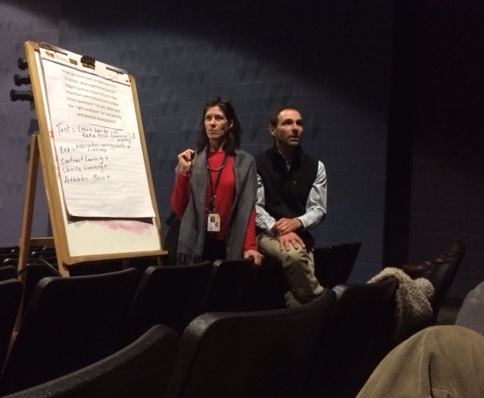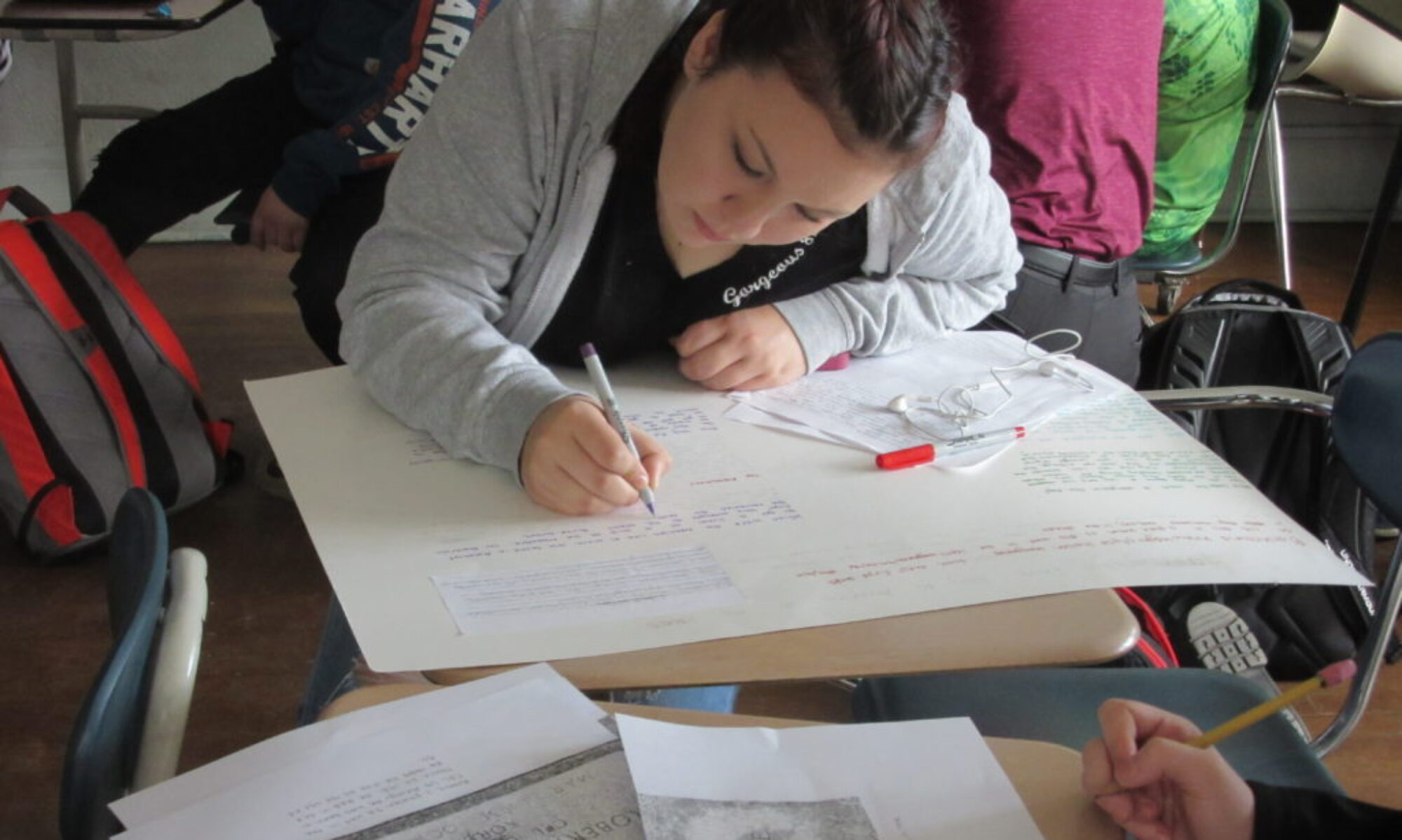A case study in engaging your community
![]() I attended an event last week that was of huge personal and professional importance: a screening of the film Most Likely to Succeed followed by a facilitated conversation.
I attended an event last week that was of huge personal and professional importance: a screening of the film Most Likely to Succeed followed by a facilitated conversation.
As a new community member, it was inspiring to see a transformative vision of schooling put forth by education leadership.
As a parent, it was energizing to talk with other parents about the future schools that we wanted for our children.
And as somebody working to support personalized learning, it was hugely encouraging to be reminded of the innovative schools that I am lucky enough to work with.
How to conduct a Community Conversation
Washington West Supervisory Union (WWSU) received a modest grant from the Nellie Mae Education Foundation last spring to engage the community, based on the idea that “As civic institutions, schools work best when they have the support of their communities, when they model democratic practices, and when they give community members opportunities to be involved and be heard.” Hear hear!
The grant allowed WWSU to draw upon technical assistance of Everyday Democracy and proceed with a plan to:
- Form a team: WWSU created a Community Engagement Coalition that included a wide variety of stakeholders in the community. The team developed an action plan, created materials to use at meetings, and got the word out through local newspapers, social media, school-based outlets, and Front Porch Forum.
- Launch the conversation – Over 100 people viewed a screening of Most Likely to Succeed. And more impressively, about 35 people stuck around afterwards for a rich discussion facilitated by two principals.
- Sustain and deepen the conversation – During four consecutive Monday evenings in March, community members will come together for Study Circles. Facilitator teams made up of community members and high school students will work to ensure the conversations are substantive and progressively build understanding over the course of the month.
- Let the conversation guide the way forward – As noted in Curriculum Coordinator Sheila Soule’s blog post, these conversations invite community members “to have a voice in the future of educating all of our children.” Those voices will need to be heard and genuinely heeded.
Most Likely to Succeed Trailer from One Potato Productions on Vimeo.
The Hook
The film was enjoyable and acted as a fascinating conversation starter. It presented a point of view in an engaging way that got people talking.
Personally, there were a few things that I could take issue with, such as the overall framing of the issue in economic terms. Too much of the rationale for changing our education system relied on the changing needs of employers. It was a Google executive who pointed out that the current rote-based system is not just bad for hiring, but “also bad for the soul.”
Yet, the film did provide an accessible and positive depiction of project based learning.

We got to see teachers and students immersed in year-long projects and experience the thrill and learning of exhibiting work to an authentic audience. There was enough data and discussion of the lack of effectiveness of traditional schooling to provide a nice point of comparison.
And although I suspect that most people will come away feeling that they would prefer this type of school, the film was refreshingly honest about what the project-based approach gives up. Teachers and parents wrestled honestly with the trade-off of letting go of some content in order to go deeply into topics that spoke to the passions of teachers and students. The film’s narrator acknowledged that there was no solid long-term research backing up the school’s approach.
As anecdotal evidence goes, however, the film provides a compelling case study.
An initial exchange of ideas
I learned the most after the film was over, from 30 people exchanging views for 30 minutes.
A few choice quotes:
- “It would be really hard for some teachers and students.” –a high school student about whether Harwood High School could replicate High Tech High’s approach. She pointed out that some teachers were already doing a lot of project based learning and that some students had trouble adjusting to it.
- “I need to learn how to ace the test until the system is changed.” — a high school student on the importance of being a skilled test taker when colleges value test scores and grades.
- “I built a working grandfather clock out of connecting blocks.” –a 6th grader excited to talk about a project at the private school he attends, where he is given an hour at the start of every day to work on an independent project.
- “To do this we would need to let kids make stuff in school again, like we used to in Manual Arts. We would need to give something up to find the time.” –from an elderly community member.
- “We will talk about how we can leverage some of the changes in state policy to support positive changes in our schools.” –one of the facilitators reminding the group to join the study circles in March.
Overall the most exciting thing about the conversation was the feeling in the room that we, as a community, could transform our schools. People were clearly ready and willing to have a conversation, and the general vibe was that we wanted to find a way to empower students to do great things within and beyond our schools. We just need to figure out how to make that happen. Together.


How schools can conduct a community conversation, by @lifelegeros #wwsu https://t.co/AdYSZOymUk https://t.co/aLnUzlnh3y
RT @innovativeEd: How schools can conduct a community conversation, by @lifelegeros #wwsu https://t.co/AdYSZOymUk https://t.co/aLnUzlnh3y
RT @innovativeEd: How schools can conduct a community conversation, by @lifelegeros #wwsu https://t.co/VMzJxynvx0 https://t.co/jIYNPgVyh2
How schools can conduct a community conversation https://t.co/a99c2Yoz6F
RT @tinkler_alan: How schools can conduct a community conversation https://t.co/a99c2Yoz6F
The Tarrant Institute’s Life LeGeros visited a recent screening of “Most Likely to Succeed” and.. https://t.co/cExRenCbga #Disrupt
How schools can conduct a community conversation https://t.co/sB93oRsMrS from @lifelegeros
How schools can conduct a community conversation https://t.co/lQiueHthuH @RowFn
RT @faystonedleader: How schools can conduct a community conversation https://t.co/lQiueHthuH @RowFn
RT @faystonedleader: How schools can conduct a community conversation https://t.co/lQiueHthuH @RowFn
RT @faystonedleader: How schools can conduct a community conversation https://t.co/lQiueHthuH @RowFn
RT @faystonedleader: How schools can conduct a community conversation https://t.co/lQiueHthuH @RowFn